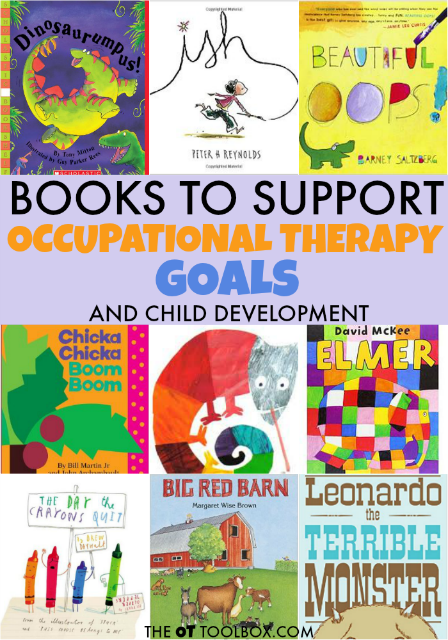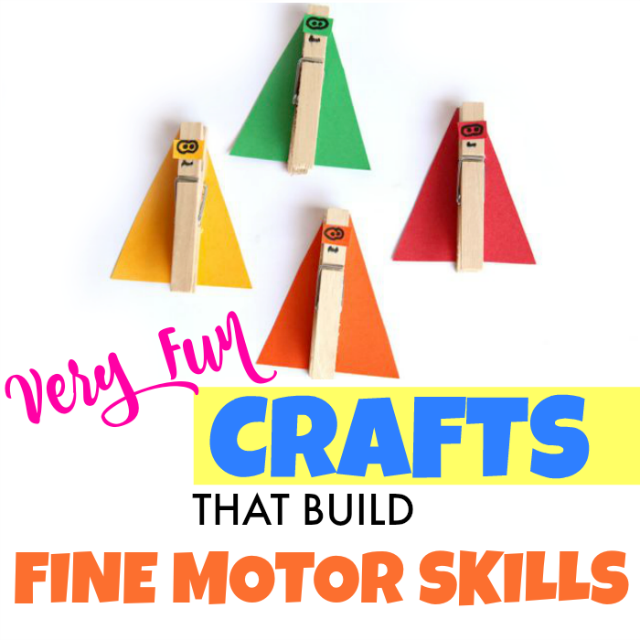Occupational therapy and play go hand in hand. There is a reason why you’ll often see kids playing as part of their OT sessions: Play is the primary job of children! There is an incredible power of play and that is the reason OT interventions are driven by play.
A family walks into an Occupational Therapy clinic for the first time. With a quick look around, the child notes swings, gym mats, ramps, balls, bins of toys, and shelves of bubbles, games, and toys. It looks more like a play room than a clinic. Even the school-based OT, with their suitcase on wheels has containers with toys, mini erasers in fun colors, balloons, small-scale games, and toys…in a school where it seems there is no time for play!
Be sure to check out our resource on the development of play when selecting activities to support the children on your OT caseload.
Occupational Therapy and Play
There is a reason that pediatric Occupational Therapy centers on play. Play is the most essential occupations of childhood and it’s a natural medium for achieving goals and prompting kids to work toward goals that may seem lofty, unnatural, or hard. Occupational Therapy goals are often included in pediatric OT interventions as the actions that come with play work to achieve the underlying areas needed for play as well as other areas of function.
Occupational Therapy Play Activities
A child’s occupation is play. The focus of Occupational Therapists is meeting the needs of their clients so that they can reach functional goals. When it comes to kids, play is the main means of learning, development, interacting, and growth.
A child uses play to build skills needed for every aspect of their development. When a child is limited in the underlying skills needed to play, not only does their functional ability to build with blocks, color, pretend, imagine, and create suffer, but all of the skills they potentially acquire may be limited as well.
A child uses play to develop many (many) areas:
- Cognition
- Problem Solving
- Executive Functioning Skills
- Attention
- Strength
- Balance
- Visual Motor Integration
- Visual Processing
- Sensory Integration
- Self Regulation
- Language Development
- Self-Confidence
- Fine Motor Skills
- Gross Motor Skills
- Social Emotional Development
- Stress Relief
- Behavior
- Imagination
- Creativity
- Self Control
Areas of development that are addressed through play are needed for independence in functional tasks.
Independence in tasks including holding a pencil, managing clothing fasteners, tools and utensils, dressing, toileting, self-feeding, school tasks, performing community activities, and many more areas require the development and interaction of the areas that a child develops through play.
This page is a space where you can find creative Occupational Therapy play ideas that can be used to meet the needs of many children. Depending on the child’s interests, play can occur in many ways and with infinite themes.
Each child will require an individualized adaptations, interactions, prompts, or supports depending on age and developmental level. As with any activity on this site, always use caution when providing activities that boost skills. An evaluation from an Occupational Therapist should be performed to determine individual needs and recommendations. This site and it’s author(s) are not responsible for any outcome as a result of these posts and activity ideas.
Use the following play activities as guides to build the healthy development and functional independence in daily living skill areas (ADLs) needed at home, school, and in the community. Each play activity will help boost underlying skills needed for healthy growth and development of the child. Activities should be used in relation to the child’s abilities. Adaptations or modifications can be used to help younger children or lower developmental levels meet their goal area needs.
Crafts in Occupational Therapy Play
Some children are drawn to create and make crafts. Use this interest to help the child develop skills such as tool use, bilateral hand coordination, visual motor integration, visual perception, fine motor development, hand strength, motor planning and coordination, creativity, problem solving, self-confidence, and more.
Try these craft ideas in play to develop and build underlying skills.
Use Recycled Materials in Occupational Therapy Play Activities
Cook with the Kids to Address Occupational Therapy Goals

Use Books for Occupational Therapy Play and Activities

Play and Development
Research tells us over and over again that children learn best from meaningful play experiences. However, the occupational therapy providers reading this can probably tell you that schools continue to require more academic requirements that are beyond the developmental age of the student. For example, we see this very often in the preschool setting. I know that I’ve walked into preschool classrooms to see 3 and 4 year old children with pencils in hand. When they are forced to trace letters, write their name, and do pencil and paper worksheets, we see this in action! i
The teachers in these classrooms are forced to follow the pressure of curriculum when they know that the developmental needs of these young kiddos benefit from play experiences.
As professionals dedicated to supporting the developmental journey of children, it is crucial to engage in self-reflection. We can ask ourselves how to respond to the requirements of the curriculum when we know the development of the child doesn’t match up.
Some resources to start with include:
- Essential Pre-Writing Skills Kids Need
- Preschool Occupational Therapy
- Preschool Centers to Develop Pre-Writing Skills
- Developmental Checklist
- Fine Motor Milestones
- Social Emotional Skills Developmental Milestones
- Visual Motor Integration Developmental Milestones
- Spatial Awareness Development in Babies
- Foster Development with Block Play
- Development of Oral Motor Skills
- Development of Eye-Hand Coordination
- Development of bilateral coordination and how this skill impacts feeding
- Executive Functioning Skill development
- Boost child development with rhyming games
- Scissor Skills development
- Grasp development
For information and resources on play by age, check out these articles:
- Baby learning and play ideas– We’ve got all of our activities for 0-2 years organized in one place.
- Toddler learning and play ideas– All of our activities aimed at this age range.
- Kindergarten learning and play ideas– You can find all of our activities and crafts for the 5-6 year old age range.
- First Grade learning and play– Look around for fun ideas for kids aged 6-7.
- Second Grade learning and play
- Middle School occupational therapy activities– Play doesn’t stop at any age! When kids are in the middle school age range, play adjusts, and occupational therapy interventions can still use this functional skill as a tool to support goals.
- High School occupational therapy activities– Likewise, in the teen years, play is a tool and a skill that supports goal achievement. It just looks different at this age and stage!
Think about how you like to spend your time. What are your hobbies? What things do you like to do on the weekends or during your time off from work? These “play” activities allow us to develop at all ages!

Colleen Beck, OTR/L has been an occupational therapist since 2000, working in school-based, hand therapy, outpatient peds, EI, and SNF. Colleen created The OT Toolbox to inspire therapists, teachers, and parents with easy and fun tools to help children thrive. Read her story about going from an OT making $3/hour (after paying for kids’ childcare) to a full-time OT resource creator for millions of readers. Want to collaborate? Send an email to contact@theottoolbox.com.



